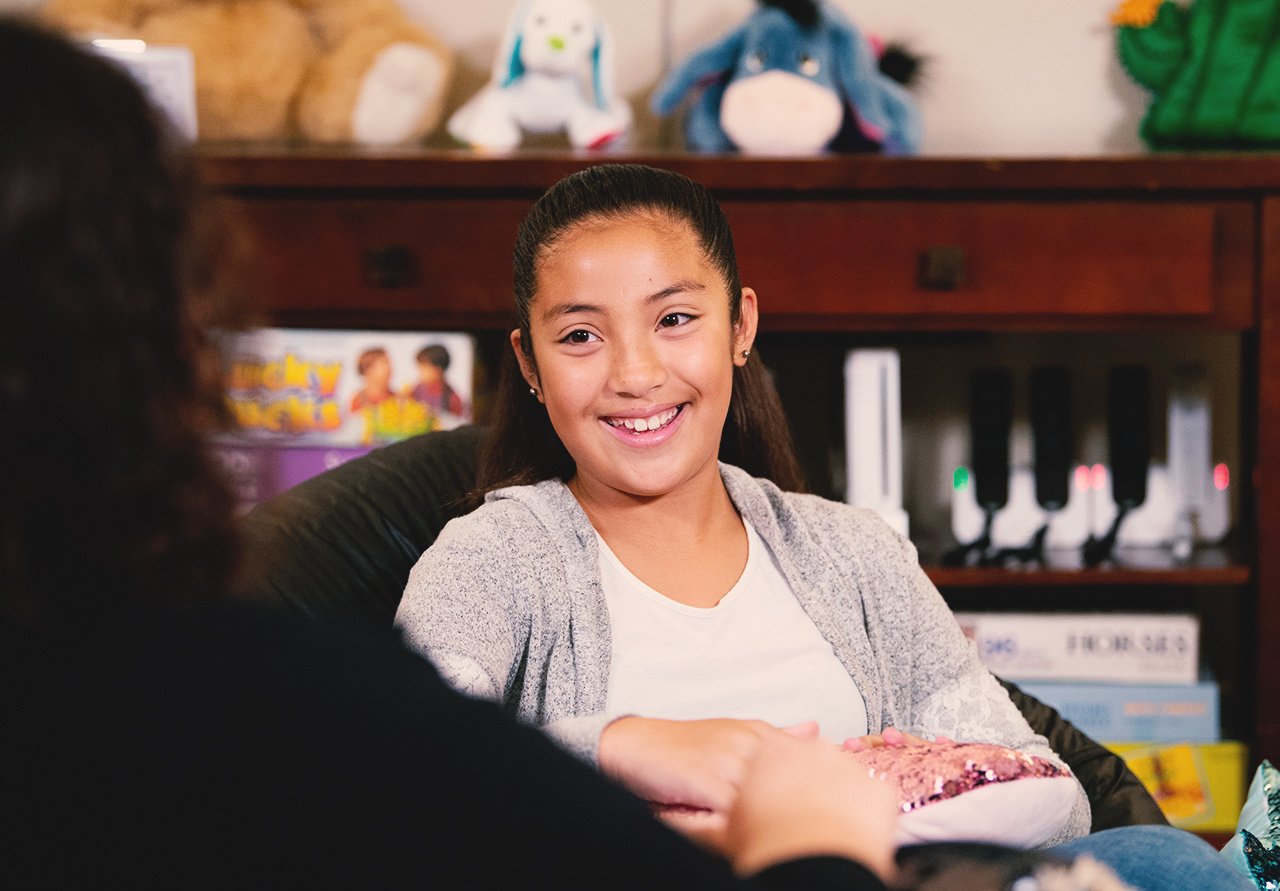![Teen Cyberbullying and Social Media Use on the Rise [INFOGRAPHIC]](https://rawhide.org/hubfs/Imported_Blog_Media/Cyberbullying-and-social-media.jpg)
Cyberbullying is a growing concern for American teens. Cyberbullying occurs when individuals use technology to write aggressive, embarrassing, or hateful messages to/about peers in order to intimidate, harass, shame, and control. In 2018, 90% of teens report having a smartphone, a 22% increase from 2014-2015! And nearly half say they are online constantly. With high online activity, teens either witness cyberbullying, are a victim of it, or become a perpetrator. Cyberbullying is on the rise, and the impact is often underestimated.
(click to enlarge graphic)
Share this Image on Your Site
Teen Cyberbullying and Social Media Use on the Rise
Cyberbullies attempt to control, shame, or harass other internet users, often creating one or more fake profiles. Cyberbullies use tactics such as gossip, exclusion, or harassment, but some cyberbullies will resort to cyberstalking or impersonation. Impersonation allows a cyberbully to gain a user’s trust. Once they have the trust, cyberbullies will reveal embarrassing secrets about the other user. While cyberbullying rates are rising, parents’ concerns are not. Approximately 94% of parents misjudge the rate of conflict occurring on social networking sites and only 7% admit they worry about cyberbullying in general. This creates a problem as cyberbullying can lead to depression and even suicide.
Cyberbullying on Social Media
Today, 71% of teens use more than one social network and have come across cyberbullying in some shape or form. 21% of teens said the main reason they checked social media so often was to make sure nobody was saying mean things about them. The Megan Meier foundation also found:
- Over 70% of students who report a cyberbullying incident say that it happened “once or twice” over the course of a school year.
- 90% of teens active on social media have witnessed cyberbullying
- 52% of teens reported being cyber-bullied
- Over 40% of children say that they have been bullied online at least once
- 25% of teens bullied repeatedly on cell phones
- 20% of students who report that they have been cyber-bullied said that it happens to them once or twice a month.
A study also found that “hyper-networking” teens that spend more than 3 hours per school day on social networks are 110% more likely to be cyberbullied.
Popular Social Networks for Cyberbullies
Teen social media platform preference has changed drastically in the last few years. The Pew Research Center indicates that Facebook is no longer the dominant force among teenagers as it once was.
The landscape in 2015…
- 75% of teens use Facebook and 54% experienced cyberbullying
- 66% of teens use YouTube and 21% experienced cyberbullying
- 43% of teens use Twitter and 28% experienced cyberbullying
- 36% of teens use Ask.Fm and 26% experienced cyberbullying
- 24% of teens use Instagram and 24% of those experienced cyberbullying
- 24% of teens use Tumblr and 22% experienced cyberbullying
The landscape in 2018…
- 35% of teens use Snapchat
- 32% of teens use YouTube
- 15% of teens use Instagram
- 10% of teens use Facebook
- Twitter, Reddit, Tumblr, and other platforms round out some of the other platforms used.
27% of teens in the Pew Research Center study noted that social media has led to more bullying and kids spreading rumors.
Early cyberbullying complaints have led to many social networks changing their bullying policies.
- In 2013, Instagram made headlines for slow reaction to a cyberbullying report.
- In 2014, Facebook actually loosened their privacy policy for teens, opening their content up to more users.
- In April 2015, Twitter took a stand against abuse.
- In May of 2015, Tumblr launched an online anti-bullying campaign to create a safe place for everyone.
Instagram’s Teen Takeover
The Atlantic sheds light on the destructive nature of Instagram in the hands of teens who are determined to embarrass or harass their peers. Teens have built their entire social structure on the platform, allowing them to be more vulnerable to bullying.
During National Bullying Prevention Month in 2018, Instagram rolled out a number of new tools aimed to curb bullying on its platform.
Wellbeing.Instagram.com provides ways to track time on the app tools available to parents. The photo-sharing app introduced an Offensive Content Filter in 2018, and now, they’ve created new tools like Anonymous Reporting for Self-Injury Posts, Anonymous Reporting for Live Video, and Sensitive Contend Screens are designed for digital well-being.
Why Do Teens Cyberbully?
Teens cyberbully for a variety of reasons. Some believe it’s easier to get away with than face-to-face bullying, while others believe teens do it to stay popular or feel powerful.
- 81% of teens say cyberbullying is easier to get away with than in-person bullying
- The National Crime Prevention Council found that 81% of teenagers believe others cyberbully because they think it’s funny
Many teens also bully because of anger, revenge, or as a way to vent frustration. Teens will also cyberbully because they are bored, have too much time on their hands, or an abundance of tech toys. Cyberbullies may also participate to avoid being bullied themselves.
How Do Teens Cyberbully?
Teens may experience or partake in a variety of cyberbullying tactics.
- Exclusion: Teenagers may intentionally exclude others from an online group.
- Cyberstalking: Teens will harass others by constantly sending emails, messages, or tagging others in posts they don’t want to be tagged in.
- Gossip: Teens will post or send cruel messages that damage another’s reputation, relationships, or confidence.
- Outing/Trickery: Cyberbullies will trick another teen into revealing secrets or embarrassing information which the cyberbully will then share online.
- Harassment: Cyberbullies will post or send offensive, insulting, and mean messages repeatedly.
- Impersonation: Cyberbullies may create fake accounts to exploit another teen’s trust. They may also hack into an account and post or send messages that are damaging to the person’s reputation or relationships.
- Cyber Threats: Cyberbullies will threaten or imply violent behavior toward others to make them feel uncomfortable.
- Flaming: Fights online that involve hateful or offensive messages that may be posted to various websites, forums, or blogs.
Many of the tactics above have been brought up in court, and all states have laws in place regarding cyberstalking or cyberharassment. Since it is a relatively new topic, more laws are appearing as new cyberbullying cases appear.
Cyberbullying Stats by Gender
In 2016, it was shown girls were more likely to experience cyberbullying compared to boys.
Boys are more likely to:
- Post hurtful pictures or videos
- Make threats
- Cyberbully more than one individual
While girls are more likely to:
- Spread Rumors
- Post indirect attacks
- Ostracize other individuals
The Effects of Cyberbullying
Teens that experienced cyberbullying reacted in a variety of ways. Some addressed the situation while others felt the need to change their day:
- Close to 64% of students who claimed to have been cyberbullied explained that it negatively impacted both their feelings of safety and ability to learn at school
- 25% had their cyberbullying situation result in a face-to-face confrontation
- 15% skip school, the equivalent of 3 million kids
While cyberbullying can change the course of someone’s day, it can also leave a deeper impact:
- 41% of teens say cyberbullying made them feel depressed
- 41% of teens also said it made them feel helpless
- 26% said they felt completely alone because of cyberbullying
Cyberbullying has also increased the need for mental health services. The number of children referred to mental health services rose 25% from 2013 to 2014. The number of children receiving counseling for online bullying also rose 87% between 2013 to 2014.
Cyberbullying and Suicide
Increased rates of depression lead to other issues for teens. Bullied teenagers are twice as likely to commit suicide than non-bullied teenagers.
- Suicide is the 3rd leading cause of death for teens in the United States
- Cyberbullying victims are 2 to 9 times more likely to think about suicide
- Cyberbullying can lead to more suicidal thoughts than traditional bullying
Know the signs of depression. If an individual is talking about death, engaging in reckless behavior, or giving away prized possessions, they may be depressed. If there is any inclination that someone is depressed, talk to them. Let them know there is help, and they’re not alone.
How to Tell if Your Teen is Being Cyberbullied
Only 10% of teenagers report they’ve been cyberbullied to their parents. When asked why they don’t report cyberbullying, they responded:
- 40% were scared their parents would get involved
- 36% worried what their parents would do
- 32% said they felt ashamed
While parents know cyberbullying happens, approximately 94% underestimate the amount of conflict that occurs on social media sites. Parents should be aware of the following signs that point to their teenager being cyberbullied:
- Sudden loss of friends
- Changes in eating habits
- Avoidance of social situations
- Sudden decrease in phone or computer use
- Apparent nervousness when receiving a text, email, or instant message
- Anger, depression, or frustration after phone or computer use
- Hesitation when participating in favorite activities
- Self-destructive behaviors such as self-harm or discussion of death or suicide
- Asking to have social media accounts shut down
- Having uncharacteristic behaviors
- Frequently feeling ill
- Decreased self-esteem
Tips for Parents
Robert Faris, researcher of school bullying and youth aggression, believes:
“Parent monitoring effectively erased the negative effects of online conflicts.”
Parents can influence teens’ awareness of inappropriate behavior online or over the phone. 58% of teen internet and cell phone users say their parents have the biggest influence on what they think is appropriate or inappropriate, yet only 1 in 6 parents are aware when their child is being cyberbullied.
If you would like to prevent your teen from being cyberbullied or feel they may be at risk, bullyingstatistics.org offers some advice:
- Discuss cyberbullying with teens. Explain what actions are appropriate and inappropriate over the internet.
- Open communication with teens and encourage them to tell a parent if cyberbullying is occurring.
- If a teen is being cyberbullied, keep the messages as proof, especially if the messages turn worse.
- Keep the computer in a common area and limit internet access in their room.
- Try blocking the cyberbully from social networks.
Encourage your teenager to take a stand if they witnesses bullying. Also encourage them to:
- Inform a parent, teacher, or adult of the bullying.
- Be kind to the individual being bullied. Include them in activities, send them positive messages, and help them understand they’re not alone.
- Start a Facebook page for students to submit positive acts they witness in school to promote positivity.
Not all Social Media is Cyberbullying
While many shocking statistics tie cyberbullying to teenagers on social media, social networks can still be an effective way for teens to connect with friends and feel supported. It is important that teens feel safe using social media and know they can talk to someone if issues arise. If your teen is active on social media, initiate open discussions about cyberbullying and make it safe for them to talk with you about it.









![Teen Cyberbullying and Social Media Use on the Rise [INFOGRAPHIC]](https://rawhide.org/hubfs/raw_assets/public/Rawhide_January_2025/images/FF-color-blade2.jpg)

